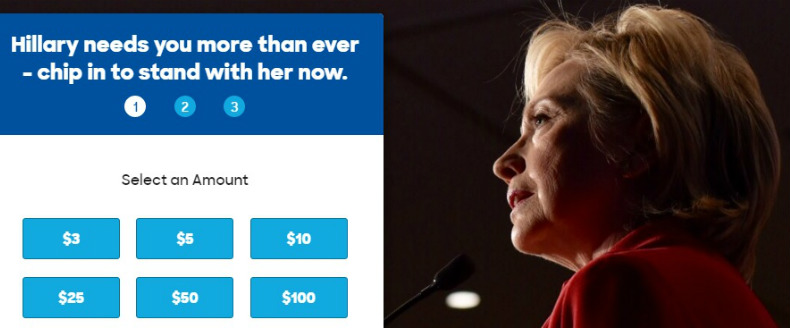Bernie Sanders won the New Hampshire primary, and he’s also winning the post-primary fundraising war: his supporters tossed him more than FIVE MILLION DOLLARS in the hours after the polls closed in the Granite State (or six million, depending on when you cut the numbers off). This echoes the situation after Iowa, and it’s yet another sign that Sanders’ small donors are upending the normal dynamic for “insurgent” candidates. He’s now the big-money man in the race, even if the individual checks are small!
Clinton’s response? An email rolled in this morning from her campaign, painting the her campaign as the financial underdog:
In the 24 hours after the polls closed in New Hampshire, Bernie Sanders’ team says they raised more than $6 million.
One of Bernie’s top strategists even bragged: “We are a better campaign … And as of today, I believe we have more resources, campaign to campaign, to expend. We are demonstrating that resource superiority by going on television all across this country.â€
I think he’s dead wrong about who has a better campaign — but unfortunately, he’s right about who has more resources. We were outspent 3-to-1 on television in New Hampshire, and we need to make sure that doesn’t happen again. Can you chip in $1 right now to help close the gap?
We have 14 contests in the next three weeks, and we just can’t allow our team to be outraised and outspent like this. This team is bigger, more diverse, and more enthusiastic than Bernie’s team — it’s time for us to show it.
Chip in $1 right now — let’s show the world how strong we are and win this nomination.
Leveraging an opponents’ strength is an OLD fundraising tactic which sticks around for a simple reason: it often works. In this case, Clinton’s using a bit of jiujitsu, trying to use Bernie’s strength to mobilize Democrats who’d rather see her in the White House. I’d LOVE to know the results, and I assume this message is part of a larger campaign to build some kind of a small-donor base. Because I hadn’t donated to the campaign before, I was asked for $1, for example — a classic way to start someone down the path to giving regularly.
Other good practices:
- The landing page includes a prominent “make this a recurring donation” option, which is echoed on an interstitial page that shows up after you give.
- The Thank You page encourages you to save your payment information (“Now, save your payment information — and we’ll mail you a free sticker.”), which sets a donor up for one-click giving in the future. This practice is vital in a mobile world, since it’s a pain to enter a credit card number into a phone. As we talk about in the fundraising chapter in my digital campaigning ebook, smart campaigns are doing everything they can to make impulse-giving easy.
- Also note the free sticker! Another technique that’s common for a reason, since people love schwag.
From a big-picture perspective, will Clinton now portray herself more broadly as the underdog, outspent on all fronts and harried by an irregular army of Berners? For someone who’s electability has hinged on inevitability, this would be a humbling admission…but possibly, one that reflects the reality on the ground.
– cpd

